| This is St Louis Catholic Cathedral at the heart of the French
Quarter. It is the oldest church in Louisiana, and the third church on this
site. The parish was founded in
1720. A hurricane
destroyed the first in 1722. On Good Friday 1788, the bells of its
replacement were kept silent for religious reasons rather than
ringing out the alarm for a fire which eventually went out of
control and burned down more than 850 buildings, including the
cathedral itself. Rebuilt in 1794, the structure was remodeled and
enlarged between 1845 and 1851. It has recently been extensively
restored. | 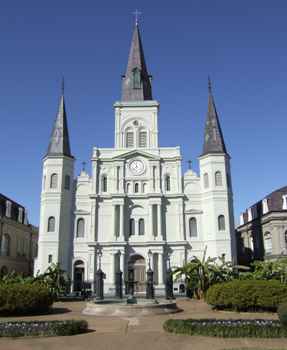 |
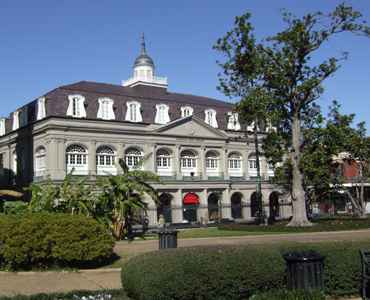 | In buildings on
either side of the cathedral are housed the
Louisana State Museum.
This is the Cabildo. It was the site of many of the important transfers of
power between France, Spain and the US, including the final handover of the
Louisiana Purchase. |
| The buildings either side of Jackson Square (either side of the
Cathedral) house a number of shops and restaurants. Both buildings were
designed by the same architect. | 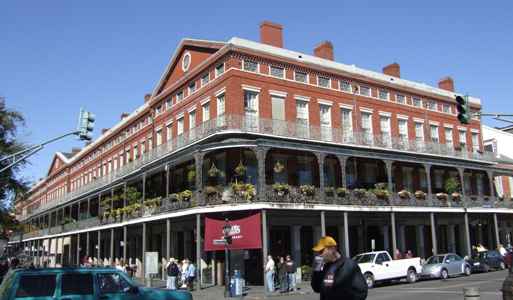 |
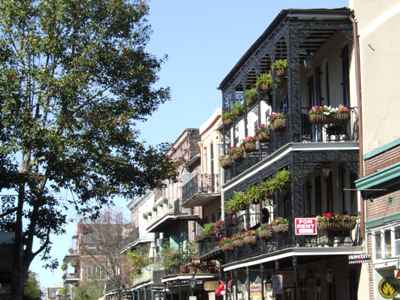 | The French Quarter
covers an area of about 90 blocks full of old buildings built in a
variety of styles. These balconies are a common feature. The streets are
quite narrow, usually one-way for traffic, and buses are banned from the area. |
| More balconies. The area actually looks more run down than I
expected, but it is quite reminiscent of parts of Paris. | 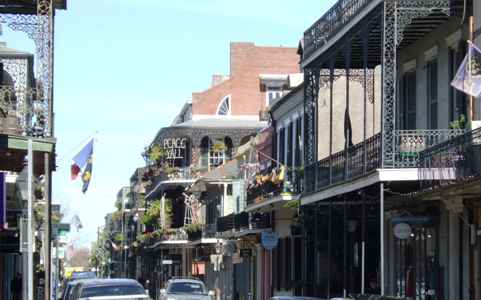 |
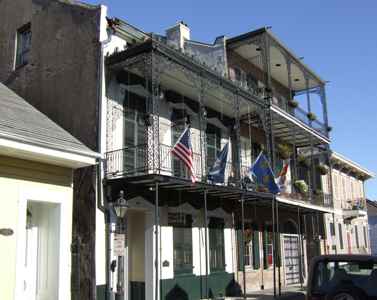 | There was relatively
little damage done here, partly because the houses were well built and close
together, and partly because the French Quarter is actually one of the higher
parts of New Orleans, so flooding was minor. Just a few roofs had lost tiles
and had acquired the commonplace blue tarpaulins. |
| The houses become simpler as you move away from the river, but
this architecture with a raised floor and many tall shuttered windows is a
common Creole style. The 'fringe' is made up of lights, probably used
during Mardi Gras when the processions move through many of the streets. | 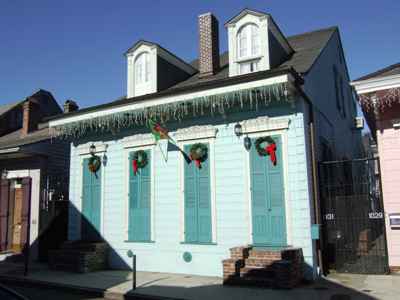 |
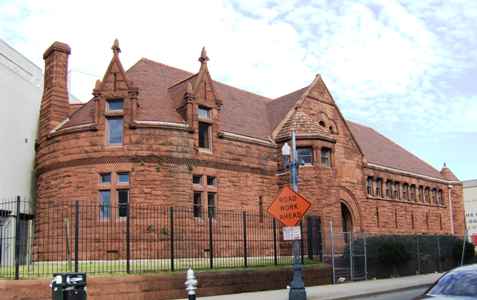 | More in the city
centre, there were skyscrapers, but occasionally you find an old building
(often a church) with a skyscraper only inches away as seen here (left).
We had wanted to go and eat at Mulate's, a Cajun restaurant/dancehall in the
fashionable 'Warehouse' district, but it was still closed due to storm
damage. |
| We took a tour out to the other major area for architecture which
is the Garden District. Here is where the wealthy lived. This is a small
house but I liked the pale green colour and the garden. | 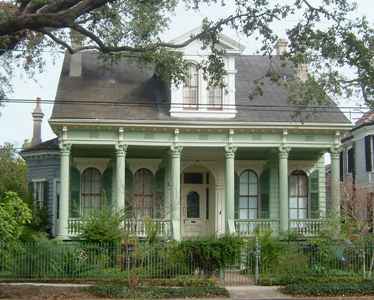 |
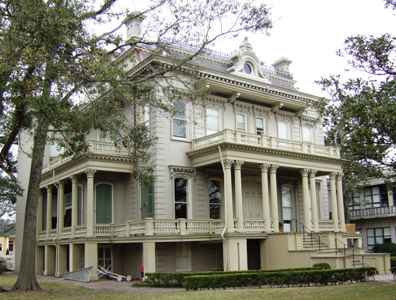 | Many of the houses
are more on this scale. The ground (first) floor is used for storage rather
than living. This design is common here because of the dangers of flooding
over the years before the Mississippi was tamed by levees. |
| There are different styles of architecture and we did buy a book
on it but at the moment I can't describe the particular styles. Wealthy,
ostentatious, outrageous.... | 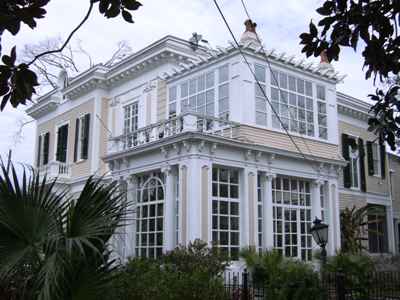 |
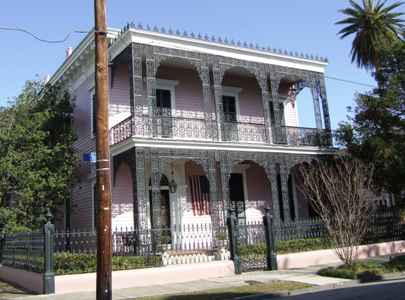 | The metal fretwork is
a common feature on houses here just as it is in the French Quarter. The
houses here are just so much bigger. |
| Most of these houses pictured are on Prytania, almost at the furthest
side of the area from the river. Between the Garden District and the river
is a poorer area where there are signs of more wind damage and more debris around. By the time you get to the river you are also at
the dockside
which is traditionally a poor area. Note this 'poor' area isn't so poor in
New Orleans terms. | 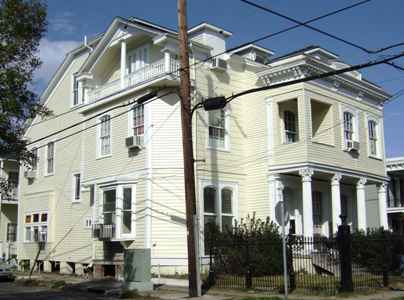 |
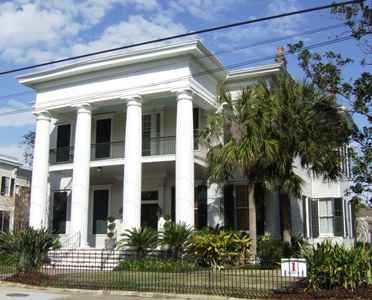 | Another popular style
is these Corinthian columns often with elaborate ornamentation at the tops.
The
houses are now even bigger, with security cameras and security etc. There was
some damage from the wind visible but not every house or even every fifth. |
| OK, I'm surprised we didn't get arrested just for taking a
photograph.... | 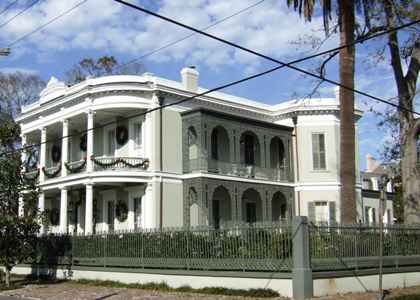 |
|